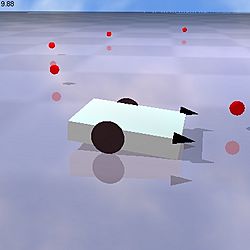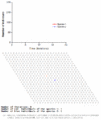Artificial life facts for kids
Artificial life (often called Alife or alife) is a fascinating area of science. It looks at systems that act like living things, how life processes work, and how life changes over time (evolution). Scientists do this by using computer programs, special robots, and even chemistry experiments.
There are three main types of artificial life, named after how they are created:
- Soft Alife: This uses computer programs and simulations. It's like creating a tiny digital world where artificial "creatures" can live and evolve.
- Hard Alife: This involves building robots or other machines that show life-like behaviors. Think of robots that can learn or adapt to new situations.
- Wet Alife: This is about using real chemicals and materials to create systems that act like living cells or simple organisms. It's like trying to build life from the ground up in a lab!
Artificial life tries to copy or recreate things we see in real biology. It helps us understand how life works by building our own versions of it. When people talk about "artificial life," they often mean the computer-based kind (soft alife).
Contents
What is Artificial Life?
Artificial life is a field of study that explores life-like systems. It's not about creating real living beings, but rather about understanding the rules and processes that make life possible. By building artificial systems that show features of life, scientists can test ideas about biology and evolution.
Why Study Artificial Life?
Scientists study artificial life for many reasons:
- Understanding Life: It helps us learn more about how real life works, how it started, and how it changes.
- Solving Problems: Ideas from artificial life can help solve complex problems in areas like medicine, engineering, and computer science. For example, designing better robots or creating new medicines.
- Creating New Technologies: It can lead to new ways of building intelligent machines or developing new types of software.
Types of Artificial Life
As mentioned, there are three main ways scientists explore artificial life. Each approach uses different tools and methods to study life-like systems.
Soft Artificial Life
Soft artificial life uses computer programs to create virtual worlds. In these worlds, digital "organisms" can be designed with simple rules. These rules might tell them how to move, how to find food, or how to reproduce. Over time, these digital creatures can evolve, meaning they change and adapt to their environment, just like real living things.
Examples of Soft Alife
- Cellular Automata: These are grids of "cells" that change color or state based on the rules of their neighbors. The most famous example is Conway's Game of Life, where simple rules can lead to very complex and surprising patterns.
- Evolutionary Algorithms: These are computer programs inspired by natural selection. They are used to find the best solutions to problems by letting many possible solutions "compete" and "evolve" over generations.
- Artificial Neural Networks: These are computer systems inspired by the human brain. They can "learn" from data and are used in things like facial recognition and self-driving cars.
Hard Artificial Life
Hard artificial life involves building physical machines, usually robots, that show behaviors similar to living organisms. These robots might be designed to move like animals, interact with their environment, or even learn new skills.
Examples of Hard Alife
- Braitenberg Vehicles: These are simple robots that show complex behaviors based on very basic connections between their sensors and motors. For example, a robot might move towards light or away from it, depending on how its "brain" is wired.
- Robots that Learn: Some robots are designed to learn from their experiences, adapting their movements or actions over time. This is similar to how animals learn to navigate their world.
Wet Artificial Life
Wet artificial life is the most hands-on approach. It involves using real chemical reactions and materials in a lab to create systems that act like living cells or simple biological processes. This field is still quite new and very challenging.
Goals of Wet Alife
- Creating Protocells: Scientists try to build "protocells," which are like very simple, artificial cells that can grow, divide, and carry out basic life functions.
- Understanding Origins of Life: By trying to build life-like systems from scratch, scientists hope to learn more about how life might have first appeared on Earth.
How Artificial Life Relates to Biology
Artificial life is like a partner to traditional biology. While biology studies life as it exists, artificial life tries to recreate or simulate life-like processes. This helps scientists test theories about evolution, ecology, and how complex systems can arise from simple rules. It's a way of doing "science by synthesis" – building something to understand it better.
Images for kids
See also
 In Spanish: Vida artificial para niños
In Spanish: Vida artificial para niños



